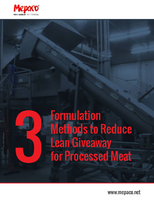FlamaSol(TM) Halogen Vs. Low Halogen Vs. Non-Halogen: What's The Difference?

"Don't play with matches." "Stop, drop and roll." "Don't hide, go outside." Growing up, we have all been taught more fire safety tips than we can even begin to remember. Yet, fire hazards remain a major issue that affects thousands of families each year. According to the National Fire Prevention Association, "In 2014, there were 1,298,000 fires reported in the United States. These fires caused 3,275 civilian deaths, 15,775 civilian injuries, and $11.6 billion in property damage." When put in black and white, the numbers are startling. This is why it is so important to take preventative actions to do your best to avoid being associated with the shocking statics
Plastics Color Corporation offers FlamaSol™, a flame retardant plastic that can be utilized to stop or slow the spread of fire. FlamaSol meets UL 94 standards, as it can be formulated to adhere to a V-0, V-1 or V-2 rating. However, if your industry requires you to adhere to different flame tests, let us know and we can formulate accordingly. All of our flame retardants are custom formulated based on the market, end application and intended use to ensure we meet, if not exceed, industry specific standards.
FlamaSol flame retardants fall into one of the three categories — halogenated, low hal-ogenated, or non-halogenated. Often customers come to us knowing what category they fall into, however if they don't know we can help identify their goal. But before you choose, it is important to understand how halogen works.
Getting Down To The Basics
Think back to high school science when you were studying the periodic table. The halogen group consists of five elements: Iodine, Astatine, Bromine, Fluorine and Chlorine. Halogen (meaning salt-former) is used to stop the spread of fire by chemically disrupting the combination of fuel, ignition and oxygen — which are the three components needed to start and maintain a fire. When it comes to fires, halogen helps to extinguish the flame, and is often spoken of, in some regard, when discussing flame retardants.
FlamaSol Chemistries
Halogenated — The halogenated version is often utilized as a concentrate, but can be formulated for a compound if needed. This version works in most resins and can be cus-tomized to meet appropriate flame rating test standards — as it can perform as a V-0, V-1, or V-2 flame rating, with the end customer ultimately certifying their product accordingly.
Low Halogenated — The low halogenated version provides a flame retardant as either a concentrate or compound product solution for applications using Polypropylene (PP) and is most efficient in homo-PP. It is deemed low halogen because in the end-application, it contains trace amounts of halogen at the parts per million (ppm) level. This type of flame retardant can be formulated to perform as a V2 flame rating — with the end customer ultimately certifying their end product.
Fully Non-Halogenated — Our fully non-halogenated version is available for polyolefins such as PE and PP in compound form and Nylon and PET in concentrate or compound form. All versions are custom formulated to meet industry flame rating standards.
If you are not sure which version you need, no problem. Consult with our highly regarded team of engineers and scientists and we can recommend the best flame retardant for your specific situation. We also provide simulated in-house vertical and horizontal burn tests to prep your product before it goes for certification. Perfect for all industries, we work hard to meet and exceed all of your flame retardant requirements. For more information on FlamaSol FR visit our website, and let us know how we can help.




